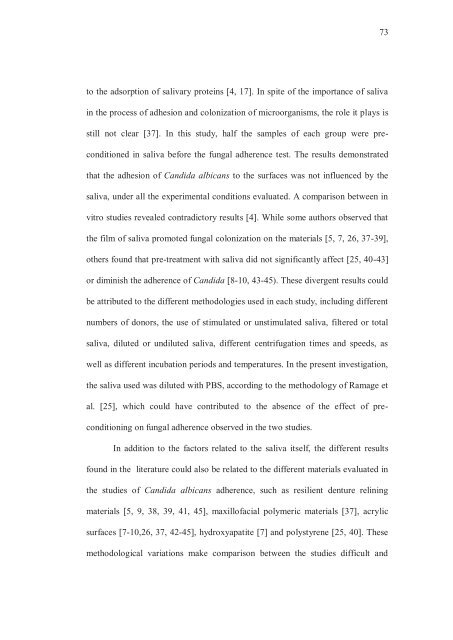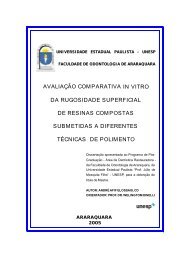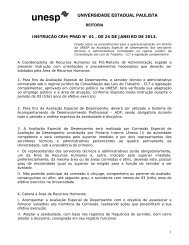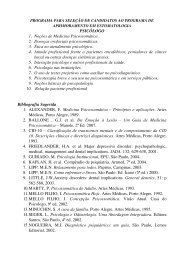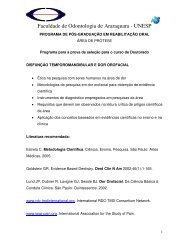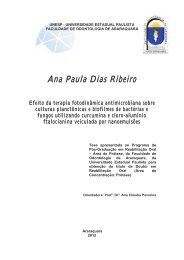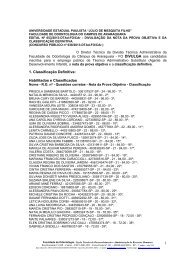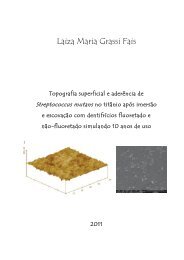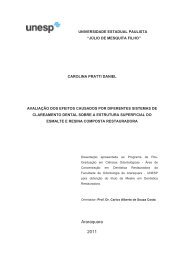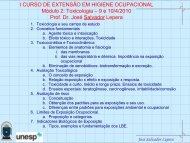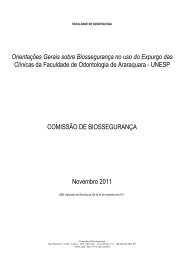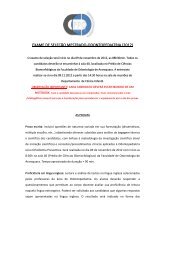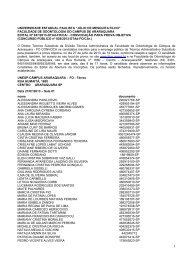universidade de são paulo - Faculdade de Odontologia - Unesp
universidade de são paulo - Faculdade de Odontologia - Unesp
universidade de são paulo - Faculdade de Odontologia - Unesp
Create successful ePaper yourself
Turn your PDF publications into a flip-book with our unique Google optimized e-Paper software.
73<br />
to the adsorption of salivary proteins [4, 17]. In spite of the importance of saliva<br />
in the process of adhesion and colonization of microorganisms, the role it plays is<br />
still not clear [37]. In this study, half the samples of each group were preconditioned<br />
in saliva before the fungal adherence test. The results <strong>de</strong>monstrated<br />
that the adhesion of Candida albicans to the surfaces was not influenced by the<br />
saliva, un<strong>de</strong>r all the experimental conditions evaluated. A comparison between in<br />
vitro studies revealed contradictory results [4]. While some authors observed that<br />
the film of saliva promoted fungal colonization on the materials [5, 7, 26, 37-39],<br />
others found that pre-treatment with saliva did not significantly affect [25, 40-43]<br />
or diminish the adherence of Candida [8-10, 43-45). These divergent results could<br />
be attributed to the different methodologies used in each study, including different<br />
numbers of donors, the use of stimulated or unstimulated saliva, filtered or total<br />
saliva, diluted or undiluted saliva, different centrifugation times and speeds, as<br />
well as different incubation periods and temperatures. In the present investigation,<br />
the saliva used was diluted with PBS, according to the methodology of Ramage et<br />
al. [25], which could have contributed to the absence of the effect of preconditioning<br />
on fungal adherence observed in the two studies.<br />
In addition to the factors related to the saliva itself, the different results<br />
found in the literature could also be related to the different materials evaluated in<br />
the studies of Candida albicans adherence, such as resilient <strong>de</strong>nture relining<br />
materials [5, 9, 38, 39, 41, 45], maxillofacial polymeric materials [37], acrylic<br />
surfaces [7-10,26, 37, 42-45], hydroxyapatite [7] and polystyrene [25, 40]. These<br />
methodological variations make comparison between the studies difficult and


